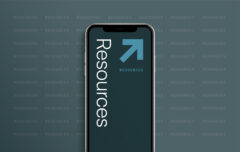
Do you often feel confused or stupid (“Apparently I don’t know how to use the Internet!”) when trying to buy something online or trying to do research on a Web site? You’re not alone, and it might not be your fault. Most sites are unnecessarily difficult to use, and there is one core reason for this.
Consider this illustration:
A Story About A New Library
Across the street from my office, the Ames Public Library just finished a massive renovation. Lasting almost two years, costing around $20 million dollars, the project more than doubled the space inside the building, seeking to “create a comfortable, flexible, and efficient space for Ames to learn, imagine, gather, and share in the 21st Century.”
Now imagine that when the renovation was complete, the library staff brought the books back in boxes and stacked them haphazardly on tables. Perhaps they would separate the tables by some quickly conceived set of categories: kids, adults, scientists, periodicals, videos, audiobooks…
A state-of-the-art bank of new computers would sit in an artfully decorated nook, a cafe would serve refreshments, and new releases would be carefully arranged near the front entrance. Fancy new scanners would make it effortless to check a book out.
But trying to find an older book you are looking for amongst the boxes piled on the tables (the most common thing done in a library)? Impossible. What would the renovation actually have accomplished? A step backwards in the usability of the library.
This illustrates the problem with almost every Web redesign I’ve seen.
The architects, general contractors, landscapers, interior decorators, and IT teams would all have done a masterful job, but the most important component would be missing.
Library Science
All libraries have rows upon rows of bookshelves, carefully arranged according a precise code: the Dewey Decimal Classification System, or the Library of Congress Classification System. These make it effortless to locate a single volume inside a sea of books.
These systems are vital to all libraries. And thankfully the Ames Public Library followed them.
The Problem: Bad Architecture
Information architecture is a design discipline closely related to library science. It involves the structure and hierarchies of the contents of a Web site and the labels and taxonomies (categories, tags, etc.) chosen for navigation and archiving.
Information architecture is to Web sites what the Dewey Decimal System is to libraries. It is also a much neglected aspect of the Web design profession, because these things (deceptively) feel intuitive to many people.
Why It Matters
For the average user of the Internet, poor architecture means wasted minutes adding up to wasted hours of frustration, trying and failing to find what you are looking for on a Web site.
For business owners, poor architecture means lost revenues when users are unable to find what they are looking for on your site. (Note: users care about what they are trying to find and not what you want to show them.)
For churches and ministries, poor architecture means lost opportunities to spread your message as people are unable to learn about your ministry or find the resources you have that will address their questions.
The Solution
The next time you find yourself frustrated with the site you are on, remember that it probably isn’t you. Take a minute and gently let the site owner know that their site is hard to use.
If you are ever given charge of a Web site project, make sure you hire an expert Information Architect as part of the team. More importantly, make sure that as a project leader you value and understand the basics of it yourself.
Information architecture is our core speciality at Mere Agency. We are a full service Web design and development agency but we understand that IA is the foundation of an effective and usable Web design. We’d love to help with your project.
Matt Heerema is owner and Web Strategist at Mere Agency and a Pastor at Stonebrook Church where he focuses on music ministries and theological training. Follow Mere on Twitter @mereagency, and visit mereagency.com for more information.











